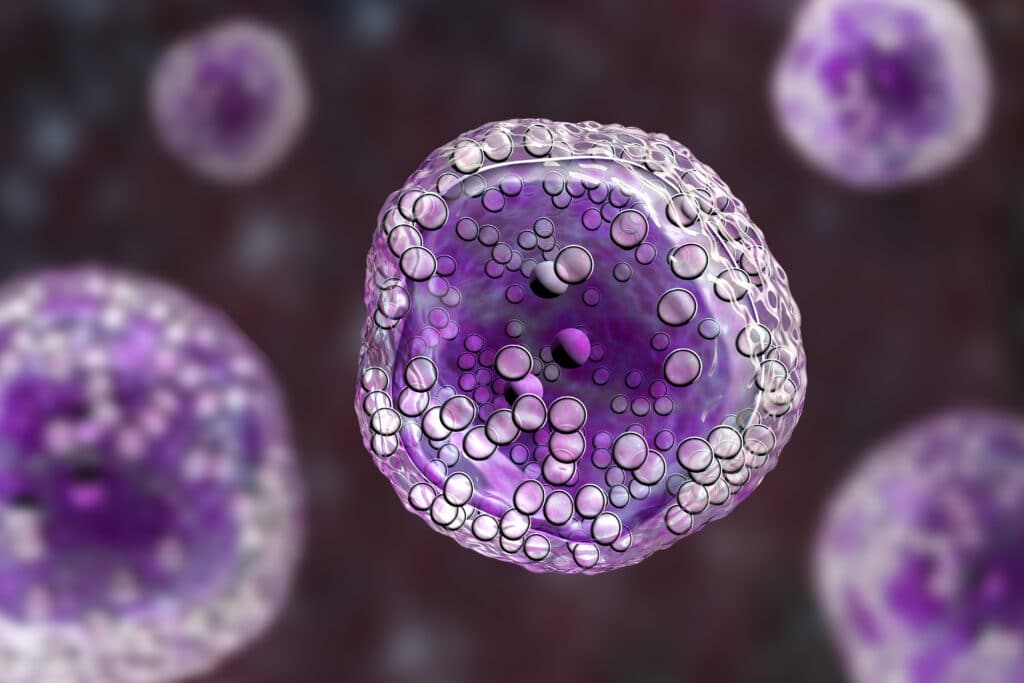Ask the Doctor: What is the difference between primary cutaneous, systemic, and breast-implant associated ALCL?

Anaplastic large cell lymphoma (ALCL) is a rare type of non-Hodgkin lymphoma (NHL) and one of
the subtypes of T-cell lymphoma. ALCL comprises about one percent of all NHLs and approximately
10 percent of all T-cell lymphomas.
ALCL can initially appear in the skin, in the lymph nodes, or in organs throughout the body. The main types of ALCL are primary cutaneous, systemic, and breast-implant associated ALCL. Milos Miljkovic, MD MSc of the National Cancer Institute Center for Cancer Research discusses the main differences between these types of ALCL, how they are diagnosed, and typical frontline therapies.
What is the difference between primary cutaneous, systemic, and breast-implant associated ALCL?
The term “anaplastic large cell lymphoma” covers such a variety of T-cell lymphomas that it is more straightforward to note what the similarities are between them. When looked at under a microscope they all have at least a few “hallmark cells” with a horseshoe nucleus and a prominent Golgi apparatus. These cells are “CD30-positive”, meaning that on their surface they express a protein called CD30 which is the target of brentuximab vedotin (Adcetris), an anti-cancer drug in the class of immunotoxins that is approved for treatment of systemic and primary cutaneous ALCL. Clinically, they are considered among the most indolent, slow-growing T-cell lymphomas, with an overall good prognosis.
Primary cutaneous ALCL belong to the category of cutaneous T-cell lymphomas (CTCLs), and accounts for 25-30% of them. It most often presents as a solitary nodule, often ulcerated, that sometimes spontaneously regresses and doesn’t require any treatment. If it persists, surgical excision or radiation are often sufficient. Radiation is also useful for treatment of multifocal disease, with two thirds of patients no having any disease recurrence after five years. If systemic treatment is needed because the lesions recur in a place that was already irradiated, or there are too many lesions to be irradiated safely, low-dose methotrexate given orally or subcutaneously can be quite effective. Combined chemotherapy is used only in cases of spread to lymph nodes, which is rare.
Breast implant–associated ALCL also has a favorable prognosis. It is usually — but not exclusively — seen in people with textured-surface breast implants. It is a new entity, being formally recognized by the World Health Organization classification of lymphomas in 2016. The median time to diagnosis is 8-10 years after implant placement, although there were cases of it being found as early as 4 months after implant placement. It presents as a seroma, and in the overwhelming majority of cases surgery alone, with the removal of the implant and the surrounding tissue, is sufficient treatment. Spread to distant areas is exceedingly rare, and in those cases it is treated similarly to systemic ALCL, with combined chemotherapy.
Systemic ALCL primarily involves the lymph nodes, but skin, bone marrow, and other organs may be involved secondarily. It is the most aggressive of the ALCL, requiring combination chemotherapy at the outset. Brentuximab vedotin is also effective, given either upfront together with chemotherapy, or as a single agent for the few cases that don’t respond to initial chemotherapy or recur after it. Systemic ALCL can be further subdivided into ALK-positive and ALK-negative systemic ALCL, depending on whether or not it has a genetic abnormality called “ALK translocation”. Not only do people with ALK-positive ALCL have a better prognosis, with higher likelihood of response to first-line chemotherapy and more chance of cure, they are also more likely to respond to second-line treatment in case of relapse. They also have more treatment options available, in the form of ALK inhibitors. Although ALK-negative ALCL still has a good prognosis compared to other T-cell lymphomas, and still responds well to brentuximab vedotin, refractory or relapsed disease are frequent enough that more intensive treatments such as high-dose chemotherapy with autologous stem cell transplantation should be considered, particularly in advanced disease.
This T-Cell eUpdate is supported by an unrestricted grant from Seagen, Inc.
